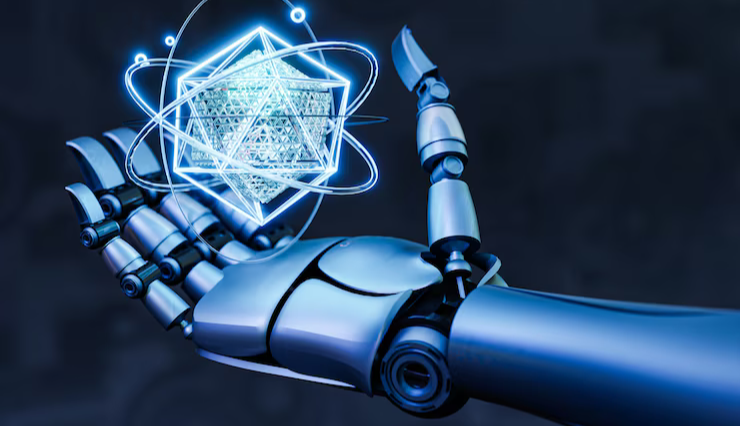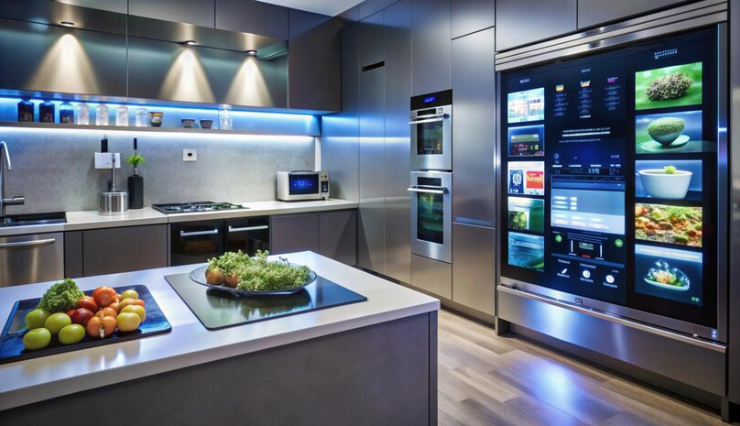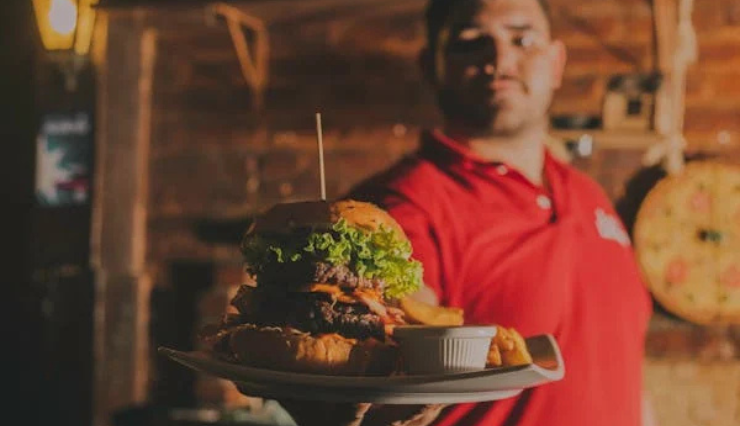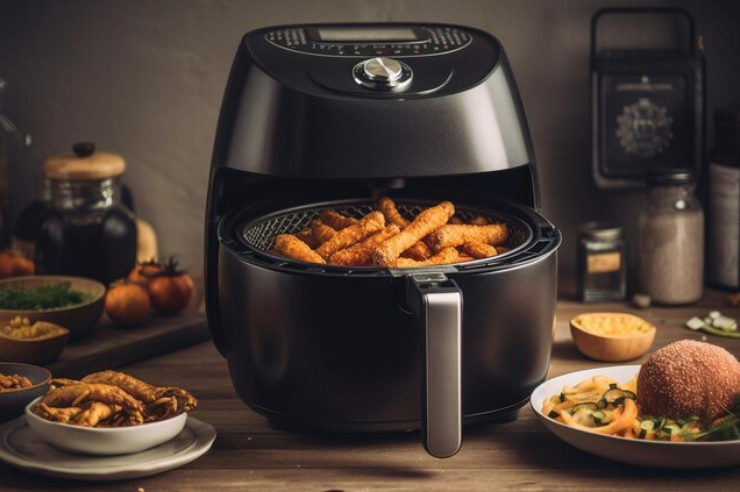Introduction
In the past few years, the food delivery sector has experienced a significant change, becoming a crucial aspect of our everyday routines. The worldwide food delivery industry is expected to hit $154.34 billion by 2023, showcasing its quick expansion and broad acceptance. With the ongoing advancements in technology and changes in consumer preferences, the food distribution sector is set to experience more innovation. This blog delves into the current food distribution revolution and predicts what lies ahead for this ever-changing industry.
The Evolution of Food Delivery
Historical Context: The idea of food delivery is not a recent development. The origins of food delivery can be traced back to ancient Rome, when merchants would bring meals directly to customers’ residences. In today’s world, classic takeout and phone orders were prevalent until the internet transformed the food delivery industry.
Technological Advancements: The emergence of online ordering platforms such as Grubhub, Uber Eats, and Deliveroo signaled a major change in the food delivery industry. These platforms used technology to link customers with a wide range of restaurants, providing convenience and diversity. Advancements like GPS tracking, live order notifications, and easy-to-use applications have made the food delivery process more efficient.
Current Landscape: Currently, the food delivery sector is marked by intense rivalry among key competitors like DoorDash, Just Eat, and Zomato. Market trends show an increasing inclination towards on-demand delivery services, influenced by hectic schedules and the need for ease. The market for food delivery has experienced an increase in new participants, including ghost kitchens and meal kit delivery services, adding more variety to the industry.
Impact of COVID – 19 on Food Delivery
Pandemic Boom: The COVID-19 pandemic spurred the expansion of food delivery services. Consumers resorted to food delivery as a safe and convenient option instead of dining out due to lockdowns and social distancing measures. The rise in need resulted in a notable growth in food delivery requests, prompting numerous restaurants to switch to delivery-exclusive models in order to survive.
Consumer Behavior: The pandemic has altered how consumers behave, and now many individuals are used to the ease of having food delivered. The norm now includes a preference for contactless delivery, online payments, and no-contact drop-offs. Furthermore, a greater emphasis has been placed on health and cleanliness, impacting the decisions consumers make when purchasing food.
Adapting to Demand: Food delivery companies quickly adjusted to meet the increased demand. They grew their delivery networks, brought on new restaurants, and established safety measures for the protection of customers and delivery staff. Some businesses also added services such as delivering groceries and alcohol in order to meet changing consumer demands.
Technological Innovations Shaping the Future
AI and Automation: AI and automation are crucial in improving the efficiency of food distribution processes. AI algorithms are able to forecast peak times for orders, enhance delivery routes, and handle inventory in a more effective manner. The testing of automation through robots and self-driving vehicles for food delivery is offering improved speed and dependability.

Drones and Robots: Using drones and robots for food delivery is now a reality, not just a concept of the future. Businesses such as Amazon and Uber Eats are looking into utilizing drone distribution in order to decrease delivery durations and access out-of-the-way locations. Robots with sensors and AI capabilities are being used in cities to manage traffic and bring food directly to customers’ homes.

Smart Kitchens: The idea of intelligent kitchens, also referred to as cloud kitchens or ghost kitchens, is revolutionizing the food distribution logistics. These kitchens are specifically created to process online orders efficiently, making the most of available space and resources. Smart kitchens, with their advanced technology and automation, can prepare and deliver orders more efficiently compared to traditional restaurant kitchens.

Sustainability in Food Delivery
Eco-Friendly Packaging: With the increasing focus on environmental issues, the food distribution sector is being urged to implement sustainable methods. Sustainable packaging options, like biodegradable containers and compostable utensils, are becoming more popular. Businesses are also investigating reusable packaging models in order to decrease waste.
Green Initiatives: Multiple food distribution companies are introducing eco-friendly measures to reduce their impact on the environment. Included in these efforts are programs that offset carbon emissions, electric vehicles for deliveries, and collaborations with eco-friendly restaurants. Food delivery companies can attract environmentally conscious consumers by making sustainability a top priority.
Consumer Preferences: Consumer demand for environmentally friendly distribution options is increasing. Consumers are more and more interested in finding eateries and delivery options that focus on sustainability. Providing eco-friendly options can increase brand loyalty and appeal to a wider range of customers.
Challenges and Opportunities
Operational Challenges: Even with its expansion, the food delivery sector encounters numerous operational hurdles. These tasks consist of overseeing distribution operations, guaranteeing food freshness while in transit, and ensuring prompt delivery times. Meeting these challenges necessitates ongoing creativity and technological investment.
Regulatory Hurdles: Legal concerns, like regulations on employee rights and requirements for food safety, have the potential to affect the way food delivery services are carried out. Food delivery companies must navigate the regulatory landscape to ensure adherence and prevent legal issues.
Market Opportunities: The food distribution sector is filled with potential for expansion. Exploring new territories, providing customized delivery options (such as vegan or gluten-free choices), and using data analysis for tailored advertising are potential paths to consider. By taking advantage of these opportunities, food distribution companies can set themselves apart in a competitive market.
The Future of Food Delivery
Personalized Experiences: Personalized experiences will define the future of food distribution. AI-powered suggestions, tailored food schedules, and individualized deals will improve client contentment. Food delivery services will use data to comprehend specific preferences and provide personalized solutions.
Subscription Models: Subscription services for food distribution are becoming more popular. These models provide customers with convenience and cost savings by offering regular meal, grocery, or meal kit deliveries. Subscription services offer a consistent source of income for food delivery companies.
Global Expansion: There is great potential for significant global growth. With the global rise in internet access and smartphone usage, food delivery companies have the opportunity to expand into new markets and connect with a diverse audience on a global scale. Cross-border food distribution platforms have the ability to expose customers to cuisines and culinary adventures from around the world.
Conclusion
The food distribution sector is experiencing a transformation due to technological progress, shifting consumer habits, and an emphasis on sustainability. AI, drones, and smart kitchens are influencing the future of food delivery, providing quicker, more effective, and tailored services. Keeping up with the latest trends and innovations will be crucial in maneuvering through the constantly changing industry. The upcoming advances in food delivery bring a promising and thrilling outlook for consumers and businesses alike.
Feel free to contact us to find out more about us and our services, explore who we are, or discuss advertising opportunities. Don’t overlook subscribing to our magazine for monthly updates, exclusive insights, and more exciting content!
Check out our another blogs and posts:
1.
2.
3.




